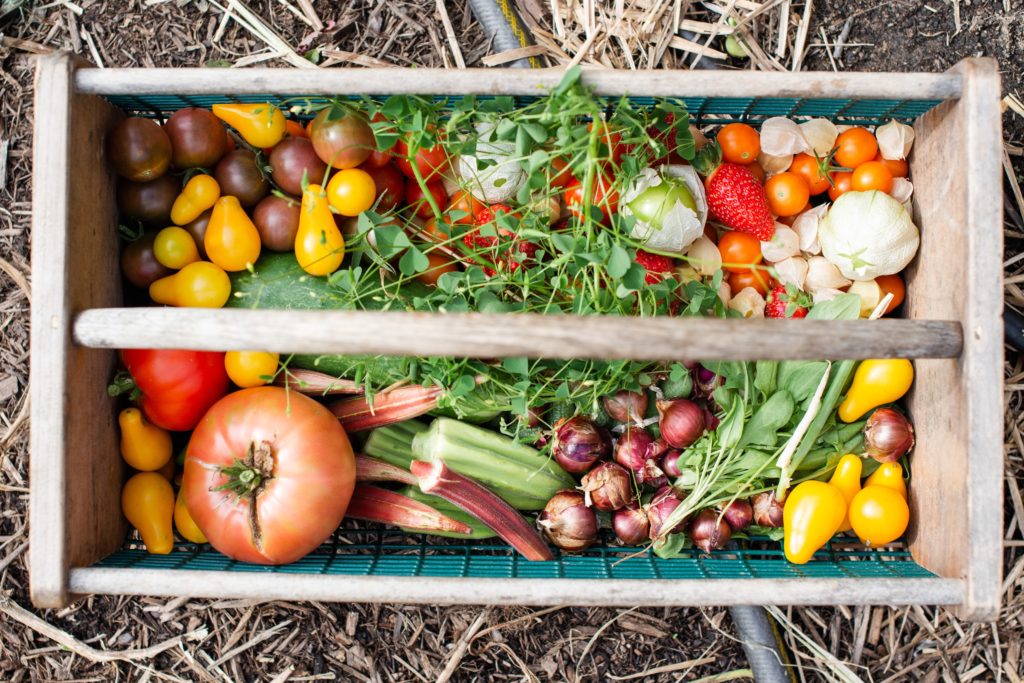Marketing dollars are increasingly spent on fresh fruit and vegetables, but will public awareness of fresh food “products” inspire more people to become vegan?
The New York Times has released a video this week, asking this intriguing question: what if broccoli was marketed professionally (just like junk food) by a major marketing agency? The video walks us through the process of creating a successful advertising campaign. Decidedly cool-looking advertising professionals visit a broccoli farm, taste gourmet dishes infused with broccoli and brainstorm catch phrases to sell it. They figure that broccoli suffers from a major identity problem. Consumers think of broccoli as boring, bitter, and gross. The marketers brainstorm catchy advertisements for the lumpy green vegetable like, “Broccoli: Now 43 Percent Less Pretentious Than Kale,” “What Came First, Kale or the Bandwagon?” and “Since when do super foods have to be super trendy?”
The broccoli experiment isn’t the first attempt in recent months to place fresh fruit and vegetables in the public eye. This advertising campaign for baby carrots puts a healthy snack in packaging usually reserved for processed junk food like chips and candy. Customers can purchase baby carrots in futuristic, chic, or extreme packaging. The catchphrase is “eat ’em like junk food.”
But no increase in marketing dollars spent on healthy food can be effective if advertisements are tongue-in-cheek and self-aware. It’s as if the marketing agencies at work are saying, “we know you don’t like vegetables. No one does. Isn’t it funny that we are advertising them?” These less than genuine adverts may sell a little more produce for a little while, but boosting public awareness of one product at a time seems unlikely to change overall eating habits for the better.
A more serious attempt at advertising a variety of whole plant foods is being made by First Lady Michelle Obama’s “Let’s Move!” campaign. Big names are getting in the game: the lucrative Sesame Workshop just last month agreed to allow their licensed Sesame Street characters to be used in advertisements for fresh fruit and vegetables. Big Bird, Elmo and the gang could appear on produce in stores as early as mid-2014. The idea is that kids will start to “pester” their parents to buy fresh, healthy produce. The tactic is one that’s tried and true in the junk food industry: 9 of the 10 cereals most frequently advertised to children also appear among the 10 cereals with the poorest nutrition ratings according to the Yale Rudd Center for Food Policy and Obesity.

The “Let’s Move!” campaign has a noble goal that many passionate vegans share: to encourage kids and adults alike to eat a diet full of a variety of whole plant foods. I wonder though if the ends justify the means. Direct marketing to children no matter the product is questionable at best since children can not determine the difference between commercials and tv programming. In a 2008 study that exposed children to a series of 20-second extracts from television shows and 20-second commercials, only 57 percent of three-year-olds, 66 percent of four-year-olds and 72 percent of five-year-olds were able to tell the difference between commercials and programs. When asked about the purpose of commercials, the children responded in about equal amounts, “I don’t know,” “for a break,” and “for information.” None were able to identify the purpose of a commercial as “to persuade.” When we advertise to children, at best we toe the line of good ethics.
Even with the recent uptick in advertising dollars spent on produce, the dollars spent on marketing these healthy choices pale in comparison to those spent on animal foods. The livestock and dairy industry marketing budgets in 2009 add up to $300 million. These funds are managed by the US Department of Agriculture to advertise industry products like beef and milk. A tiny portion of the sale from these animal products is contributed to the fund. This system is called a “checkoff.” Government-managed checkoffs have produced such hugely successful advertising slogans as, “the incredible, edible egg,” “milk: it does a body good,” “beef: it’s what’s for dinner,” and “got milk?” Producers of fresh fruit and vegetables typically spend between $2 and $9 million dollars per year on advertising. That’s $2-$9 million–combined–spent on advertising on all fresh fruit and vegetables, compared with $300 million in checkoff funds for just beef and milk. Such comparatively meager marketing funds could not inspire consumers to eat healthy plant foods, even if the funds did buy more genuine advertisements.
Will marketing fresh food create more vegans? No, but that doesn’t mean that we vegans don’t need to advertise. There is a technique in marketing called “unique positioning,” where one aspect of a product is championed above all others (think: bananas are good because they have potassium). Even though we are well-informed vegans and we know that pumpkin seeds are a great source of iron, and flax seed has plenty of omega-3 fatty acid, we should resist uniquely positioning plant foods. That marketing tactic is leftover from a food society that says: you need to eat meat because where else will you get your protein? We vegans don’t need to advertise a product, but ourselves. Let’s share our certainty that a wide variety of fresh, whole fruit and vegetables are needed for health. We will create more vegans by the ways, big and small, that we share our passion for a vegan lifestyle with friends, family, and the people we meet. The best advertising for fresh fruit and vegetables is us!
Also by Chelsea: Vegan Oil-free Wheat Bread Recipe
Top 3 Ways to Cook Without Oil
__
Photo: Unsplash




